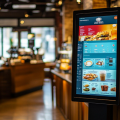The role of remote scribes has become increasingly vital to modern healthcare practices. These professionals allow physicians to focus more on patient care by handling the intricacies of real-time documentation. As healthcare providers face mounting administrative burdens, the integration of VMeDx remote scribes into daily medical operations has emerged as a transformative solution. This article outlines the daily workflow of a remote medical scribe, providing a detailed look into their responsibilities, how they streamline documentation processes, and how they ultimately contribute to better healthcare delivery.
Table of Contents
Morning Routine: Preparing for the Day

A typical day for remote scribes begins before the physician’s first appointment. Preparation is key. They start by reviewing the day’s schedule through the practice’s electronic systems, noting patient names, appointment types, medical histories, and any special instructions from the provider.
Before the first session, scribes also ensure their systems are functioning properly—headset, secure access to the EHR, video conferencing tools, and patient charts must be ready. A scribe’s preparedness directly impacts the accuracy and speed of documentation throughout the day. By having key patient data and provider preferences on hand, remote scribes help set the tone for a productive workday.
Live Documentation During Appointments
Once appointments begin, remote scribes are actively present (via secure video or audio connection), documenting patient encounters in real time. They listen attentively to the interaction between the physician and patient, entering notes, findings, diagnoses, and treatment plans directly into the electronic health record.
Remote scribes are responsible for ensuring that every detail is recorded accurately, including:
- Chief complaint
- History of present illness (HPI)
- Past medical, family, and social histories
- Review of systems (ROS)
- Physical exam findings
- Assessment and plan
During these sessions, the scribe must be highly attentive, organized, and capable of interpreting complex medical language. They often flag missing information or clarify terminology with the physician to ensure complete and accurate charting.
Managing Documentation Consistency
One of the distinguishing features of remote scribes is their ability to maintain consistency in charting, regardless of patient volume or provider specialty. Throughout the day, scribes ensure that documentation style aligns with physician preferences and organizational standards.
This consistency is crucial not only for compliance but also for communication with other healthcare professionals. A well-documented encounter enables smooth transitions of care and improves the accuracy of insurance coding and billing.
Remote scribes also track documentation gaps in real-time, which allows providers to address missing details before moving on to the next patient. This real-time correction helps avoid late-night charting sessions for physicians and improves the turnaround time for patient records.
Assisting With Chart Prepping and Administrative Tasks
In addition to documenting live encounters, remote scribes often assist with chart prepping. Before a patient’s visit, they review past notes, lab results, and specialist reports, then organize the chart for the physician’s review. This saves valuable time and helps physicians focus on patient interaction rather than sifting through documents.
Scribes may also support various non-clinical but essential administrative functions, such as:
- Sending prescription refill requests to pharmacies
- Documenting follow-up instructions
- Managing inbox messages related to patient concerns
- Tagging charts for billing and coding teams
These duties position remote scribes as integral members of the care team, providing behind-the-scenes support that keeps the clinical workflow running smoothly.
Midday Review and Follow-Ups
Around midday, remote scribes typically take time to review the morning’s documentation. This includes proofreading for grammar, medical accuracy, and formatting. If any inconsistencies are found, they are flagged for review by the provider.
Some scribes use this time to catch up on unfinished notes, check their upcoming appointment list, or collaborate with other staff. Efficient remote scribes build close working relationships with physicians, which allows for clear communication and faster resolution of any issues that arise during documentation.
Afternoon Sessions: Sustaining Accuracy and Focus
The afternoon mirrors the morning in structure, though fatigue can make sustained accuracy a challenge. The best remote scribes pace themselves throughout the day, taking scheduled breaks to maintain their concentration.
Remote scribes are often paired with specific physicians for extended periods, allowing them to develop an intuitive understanding of their documentation style, frequently used terms, and preferred charting methods. This rapport not only increases documentation speed but also improves quality.
In fast-paced settings, such as urgent care or emergency departments, remote scribes must remain especially sharp and agile. The ability to quickly adapt to various case types and physician preferences is one of the key strengths of skilled remote scribes.
End-of-Day Responsibilities
As the day winds down, remote scribes review all documentation to ensure it is complete, accurate, and compliant with institutional standards. They confirm that all charts have the necessary elements for coding and that nothing essential has been omitted.
Some scribes may also attend end-of-day meetings with providers to recap the day, discuss any unusual cases, and address feedback. This time is also used to prepare charts for the following day, ensuring a smooth transition into the next work cycle.
Ensuring Compliance and Data Security
Throughout their workday, remote scribes are expected to follow strict compliance guidelines, especially concerning patient privacy. All work must be performed on secure, encrypted platforms, with access limited to authorized users only. HIPAA training and adherence to documentation protocols are standard expectations for remote scribes.
Maintaining confidentiality and ensuring data security is not just a policy—it’s a professional obligation. The trust between providers and scribes is grounded in the assurance that sensitive information is treated with the highest level of care.
Continuous Learning and Adaptation
The best remote scribes are not just good at typing quickly or recognizing medical terms—they are proactive learners. As medical practices, terminologies, and documentation systems evolve, scribes must keep up with ongoing education. Many scribes receive continuing training on:
- Updates to EHR platforms
- Specialty-specific documentation practices
- Medical terminology refreshers
- New healthcare regulations
This commitment to growth ensures they remain valuable contributors to the provider’s workflow and are ready to adapt to new specialties or shifts in medical standards.
Impact Beyond the Screen
While remote scribes may work from distant locations, their impact is felt directly within the clinic walls. By offloading documentation tasks, they give physicians the freedom to engage more deeply with patients, reduce after-hours charting, and avoid burnout. The ripple effects include:
- Improved physician satisfaction
- Shorter wait times for patients
- Higher quality documentation
- Faster insurance processing
Remote scribes help shape a more responsive, patient-centered care model—one in which providers can operate at their best without being bogged down by administrative overload.
Conclusion: A Vital Role in Modern Healthcare
The daily workflow of remote scribes is structured, rigorous, and centered on one goal: supporting physicians in delivering exceptional patient care. From the early hours of chart preparation to the final review of records at day’s end, these professionals bring accuracy, efficiency, and consistency to every task.
As the healthcare industry continues to prioritize operational efficiency and provider wellness, the demand for experienced remote scribes will only increase. Their behind-the-scenes efforts ensure that doctors can do what they do best—heal—while the documentation stays accurate, timely, and compliant. In every sense, remote scribes are not just assistants to the physician—they are indispensable allies in modern care delivery. Visit www.vmedx.com for more!
























